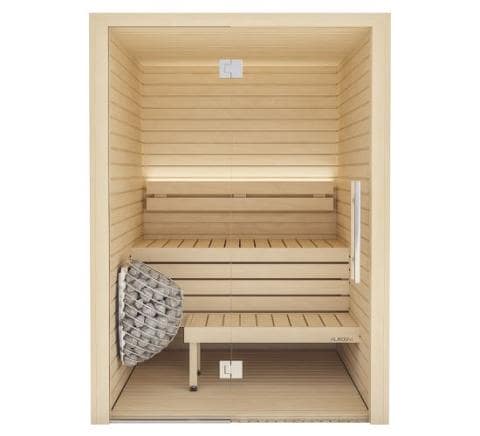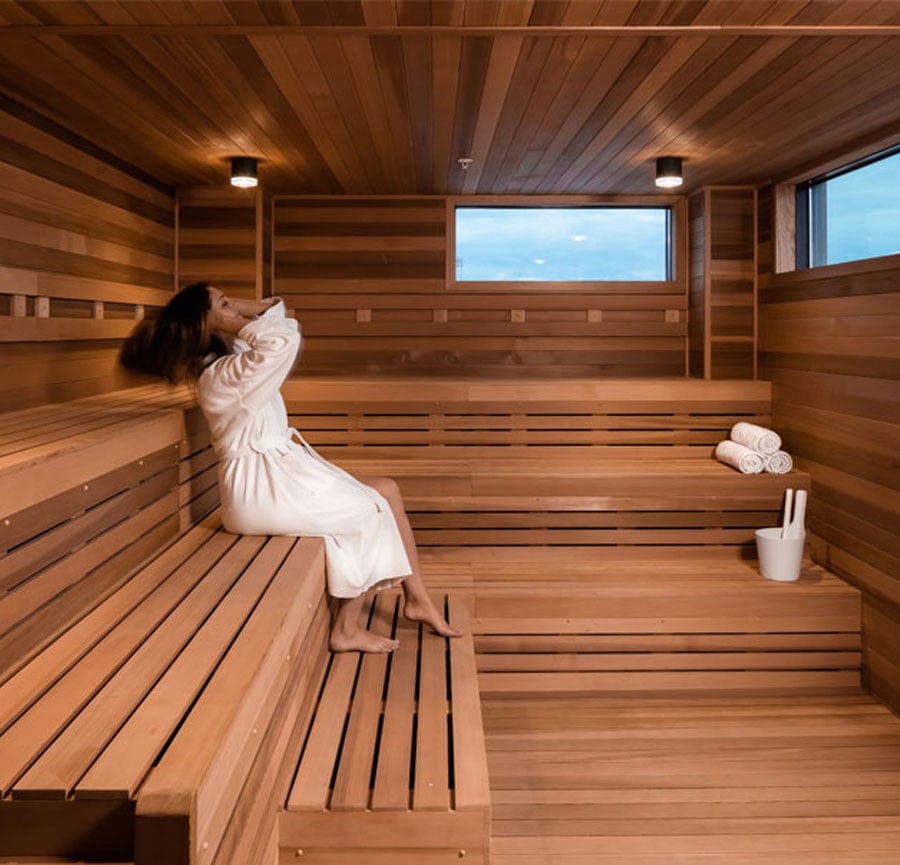Traditional Sauna - The Facts
Top Guidelines Of Traditional Sauna
Table of ContentsSee This Report on Traditional SaunaOur Traditional Sauna IdeasSome Known Incorrect Statements About Traditional Sauna Traditional Sauna for DummiesThe Only Guide for Traditional Sauna
A lot of the weight shed in a sauna is water loss and is re-gained upon rehydrating. However, without a question sauna can be an integral part of a healthy weight management program. To check out the differences between conventional and IR saunas, I will certainly divide these right into verifiable, theoretical, and produced differences.Thus, the hottest factor in the saunawhich is at the ceiling directly over the sauna heateris commonly between 185 and 190 F. Claims that a typical sauna surpasses 200 F is just not real and not applicable for electric saunas sold in the US. The temperature level for a far-infrared sauna is normally set in between 120 and 140 F; nonetheless, unlike the traditional sauna, the objective in and IR space is not to accomplish a high temperature.
As a result of this, the temperature distinction is nearly pointless, since extreme sweating leads to both sauna kinds, yet the method of warming the body is different. In an IR sauna the bather will really feel hot and will sweat profusely, yet at a lot reduced temperatures (Traditional Sauna). Thus, if the goal is to invest longer durations of time in the sauna, the IR sauna is a good option
When a standard sauna has actually been correctly heated up, the sauna walls are cozy, the air temperature has attained set temperature level and the rocks are super warmed. As an interesting side note, the warmed walls and the rocks are releasing far-infrared warm, incorporated with the warmed air, to produce an "wrapping up warm".
Getting My Traditional Sauna To Work

When the heat is attained, the elements cycle on and off to maintain the heat. A lot of traditional sauna users appreciate putting water over the rocks to develop vapor to increase sauna moisture levels. The advantages of putting water over the rocks consist of: making the space more comfy, dampening the nasal flows, and allowing the usage of aromatherapy by mixing crucial oils with the water.

When the energy gets in the body, it creates the body temperature level to raise and eventually results in perspiration. In an infrared sauna it is very important for the emitters/heaters to remain on practically his explanation constantly. Because there is no mass of rocks to keep heat, the sauna will cool if the emitters turned off.
As stated above, the sauna bather in an infrared room desires to position himself before operating emitters to obtain maximum gain from the heat. The home heating time for both areas can be extremely various, depending upon just how the areas are used. For a traditional sauna, a bather needs to allow 30-40 mins for the space to achieve a wanted temperature level and to effectively pre-heat the rocks.
The Ultimate Guide To Traditional Sauna
A well created sauna will commonly accomplish a temperature of 150-160 F in about 30-40 mins. For hotter temperature levels, the area might require to warm for a longer duration.

Conventional saunas have a tendency to be bigger (hence use more electrical energy) than infrared saunas, although typical saunas are certainly offered in one and 2 individual dimensions. For a two-person traditional sauna, 5x6 or 5x7 dimension is most popular. The top bench can Look At This conveniently seat two or 3 people and is likewise enough time to exist down throughout the sauna session.
What Does Traditional Sauna Do?
The ordinary price per kWH of electricity in the U.S. is about $0.11, so a 4.5 kW heating system will set you back roughly $.50 to run for one hour, if the heating unit runs constantly for one hour. Commonly a sauna heater will compete 75% of the first hour and 50% of succeeding hours on considering that the elements cycle once the established temperature is accomplished.

Ultimately, there is a rarely talked about distinction in the social experience between the two spaces. While our society has actually shed a few of the social benefit of the standard sauna experience, it can be really socially fulfilling (Traditional Sauna). From household time in the sauna, to heart-felt discussions with better halves, to sauna partiesthe traditional sauna experience can cause intimate mingling
Everything about Traditional Sauna
Many higher end infrared spaces include tinted light treatment, stereo and full-glass fronts. The dimension of a lot of areas permit for 2 people to comfortably utilize the space, while some layouts might enable for a third or 4th individual to utilize the space. Custom infrared rooms are additionally readily available, with space sizes readily available approximately 7' x 8' x 7' high.